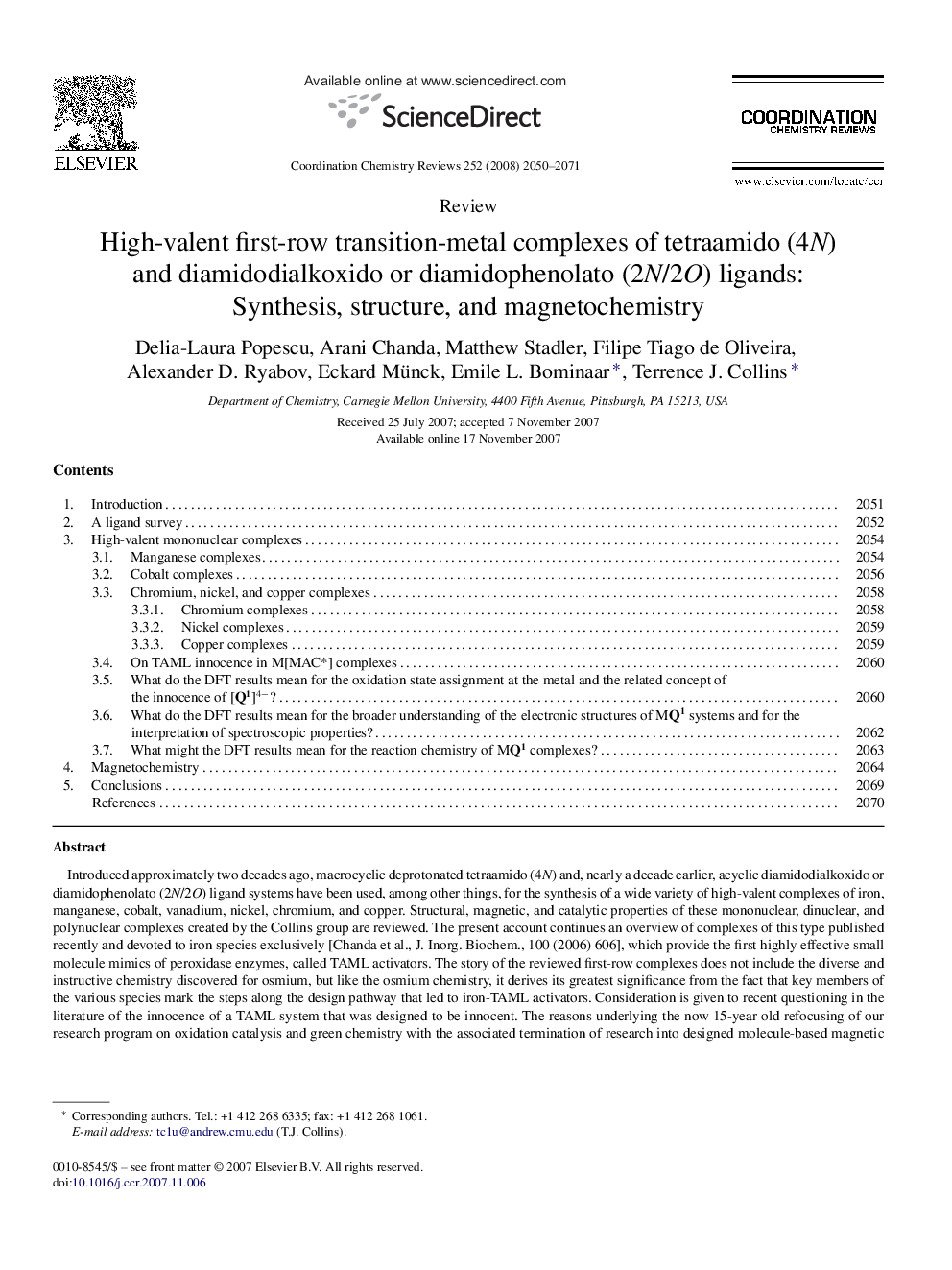| کد مقاله | کد نشریه | سال انتشار | مقاله انگلیسی | نسخه تمام متن |
|---|---|---|---|---|
| 1300698 | 1498814 | 2008 | 22 صفحه PDF | دانلود رایگان |

Introduced approximately two decades ago, macrocyclic deprotonated tetraamido (4N) and, nearly a decade earlier, acyclic diamidodialkoxido or diamidophenolato (2N/2O) ligand systems have been used, among other things, for the synthesis of a wide variety of high-valent complexes of iron, manganese, cobalt, vanadium, nickel, chromium, and copper. Structural, magnetic, and catalytic properties of these mononuclear, dinuclear, and polynuclear complexes created by the Collins group are reviewed. The present account continues an overview of complexes of this type published recently and devoted to iron species exclusively [Chanda et al., J. Inorg. Biochem., 100 (2006) 606], which provide the first highly effective small molecule mimics of peroxidase enzymes, called TAML activators. The story of the reviewed first-row complexes does not include the diverse and instructive chemistry discovered for osmium, but like the osmium chemistry, it derives its greatest significance from the fact that key members of the various species mark the steps along the design pathway that led to iron-TAML activators. Consideration is given to recent questioning in the literature of the innocence of a TAML system that was designed to be innocent. The reasons underlying the now 15-year old refocusing of our research program on oxidation catalysis and green chemistry with the associated termination of research into designed molecule-based magnetic materials are explained. Our closing contributions from the mid-1990s to the design of molecule-based magnetic materials are reviewed. Previously reported data are discussed in conjunction with newly obtained information on the complexes using density functional theory.
Journal: Coordination Chemistry Reviews - Volume 252, Issues 18–20, October 2008, Pages 2050–2071